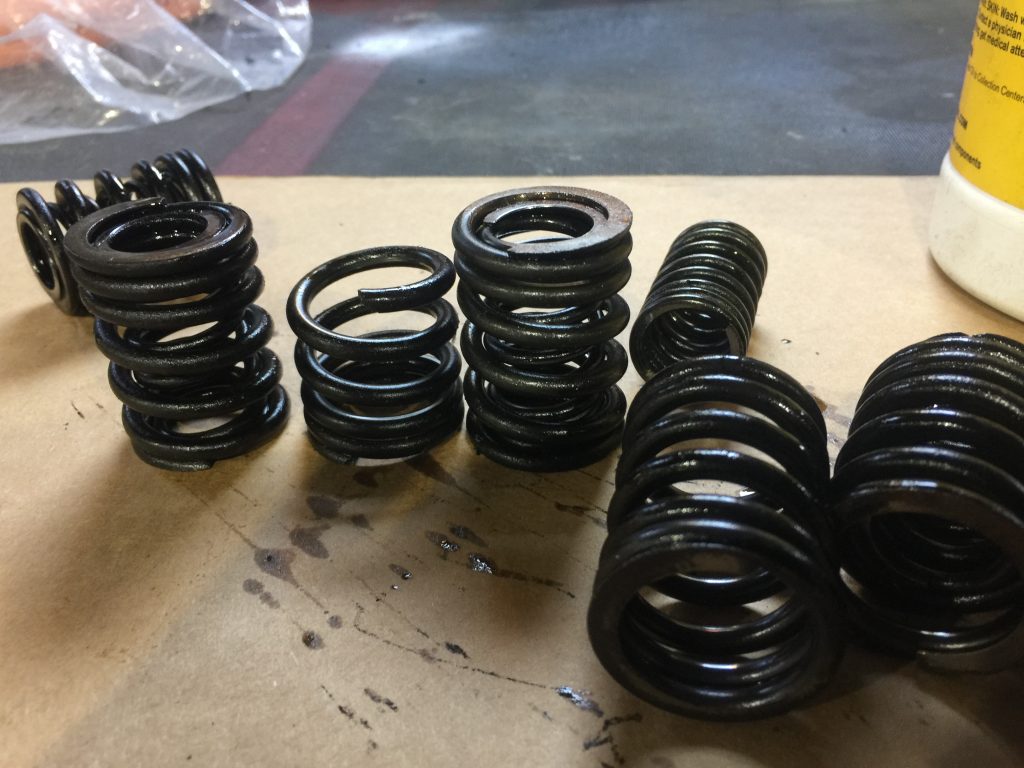We had a TR4 in the shop recently, running a bit rough and not developing full power. Quick for sure, but I thought we could do better. We checked over the usual suspects, tuned and synched the carbs, checked all the ignition components and drove it again, without much change.
The one tool that made the most difference for this job was a pair of insulated pliers, with which Russ removed one plug wire at a time while listening for changes in RPM. Cylinders 2-4 had a consistent drop with the plug wire removed. But number one made only a slight difference when with the spark plug lead disconnected. We checked compression, and it was consistent in all cylinders.
Next we removed the valve cover to check valve adjustment. A simple push of the thumb downward on each of the valves revealed the issue- all of them were too firm to move by hand except one. The intake valve spring on number one was broken. There was enough tension to keep the valve from falling into the combustion chamber, but it was broken still, and once we replaced the springs and adjusted the valves, the car ran, well, about 25 percent better. It’s amazing how good valve timing requires good springs. You can see the broken outer spring in the photo. (it’s the one that’s a little short.)

Simply removing and replacing the plug wires one at a time is an easy way to verify that each piston is pulling its share of the load. If your car is making noises or feeling anemic, this is a useful low-tech diagnostic tool.











